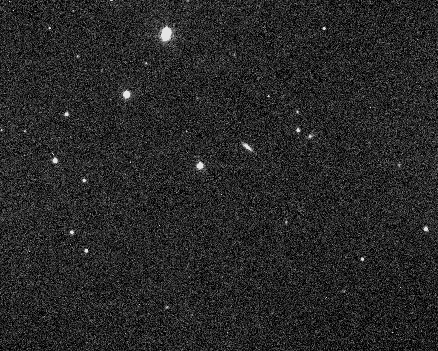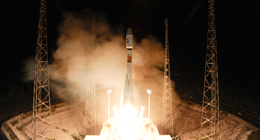As part of the tests to try and diagnose the stray light issue noticed in the first month of instrument commissioning, the Gaia operations team is making a series of spacecraft orientation changes.
The spacecraft was first tilted from 45 to 42 degrees and then to 0 degrees, that is, facing its sunshield directly at the Sun. Then the spacecraft was returned to 45 degrees.

Gaia tilt seen from Earth
Astronomers Peter Veres and Bryce Bolin, who were following a call for Earth-bound observations to improve the prediction of Gaia’s brightness under different viewing conditions, used the 2.24m telescope on Mauna Kea in Hawaii to capture Gaia’s tilt from 0 to 45 degrees on 27 February.
The resulting movie nicely illustrates the change in brightness of the spacecraft over a period of around half an hour (12:14:52 UT to 12:42:06 UT), as Gaia’s sunshield tilted away from the Earth. Gaia is the bright object in the centre of the movie and moves downwards.
Dave Tholen, who processed the images, said: “We started with 10 second exposures for the first 30 exposures, then increased the exposure time to 20 seconds to get images 31 to 35, then increased again to 40 seconds for images 36 to 40. The last three exposures were 80 seconds each.”
The observations also captured a main belt asteroid (2002 RS34) moving from top centre to the right of the field of view in the movie.
As for the issue of stray light, the data are still being analysed. The tilting process will be repeated again, at a much slower rate, in order to gather more information from on-board systems during the transition period.


Discussion: no comments